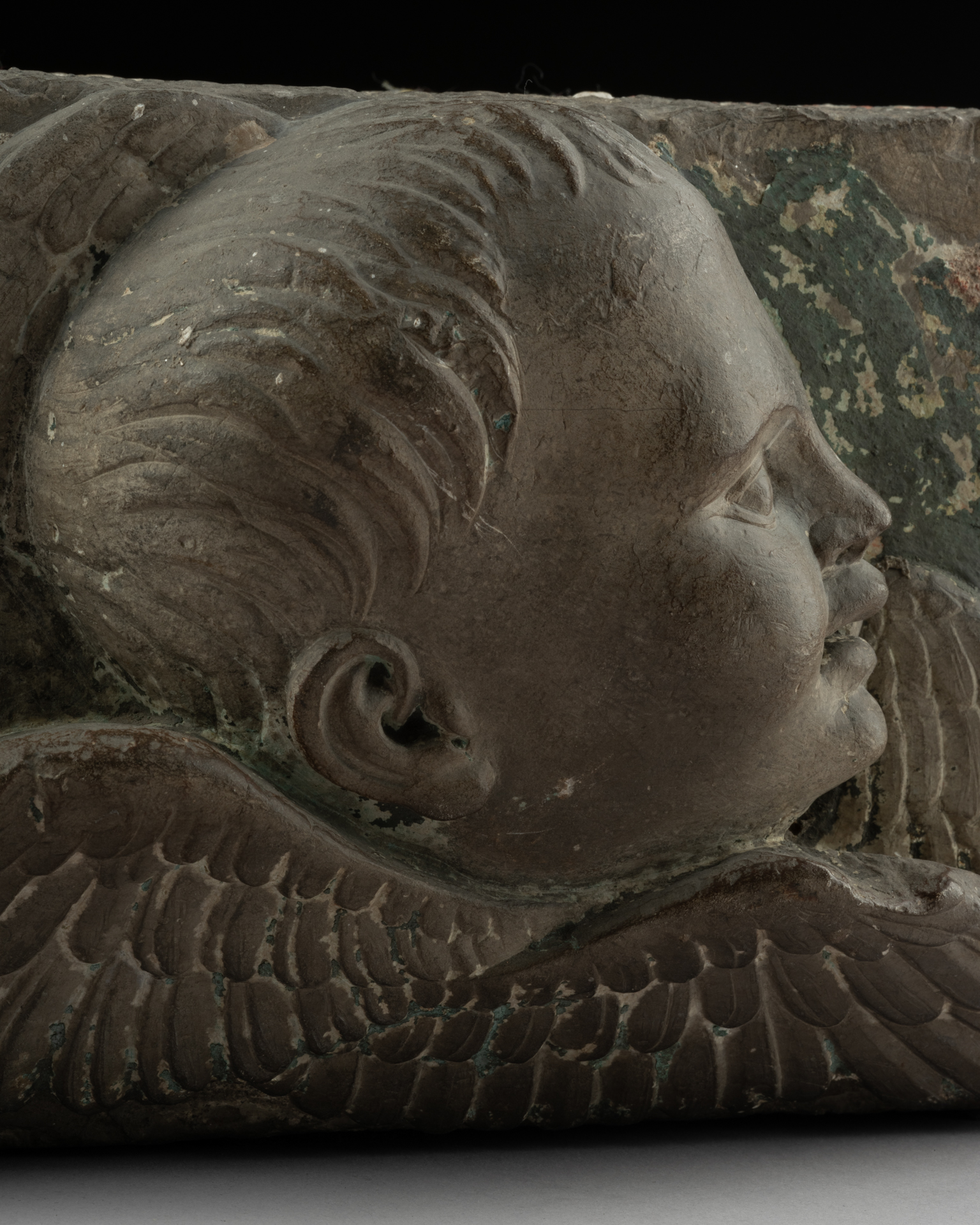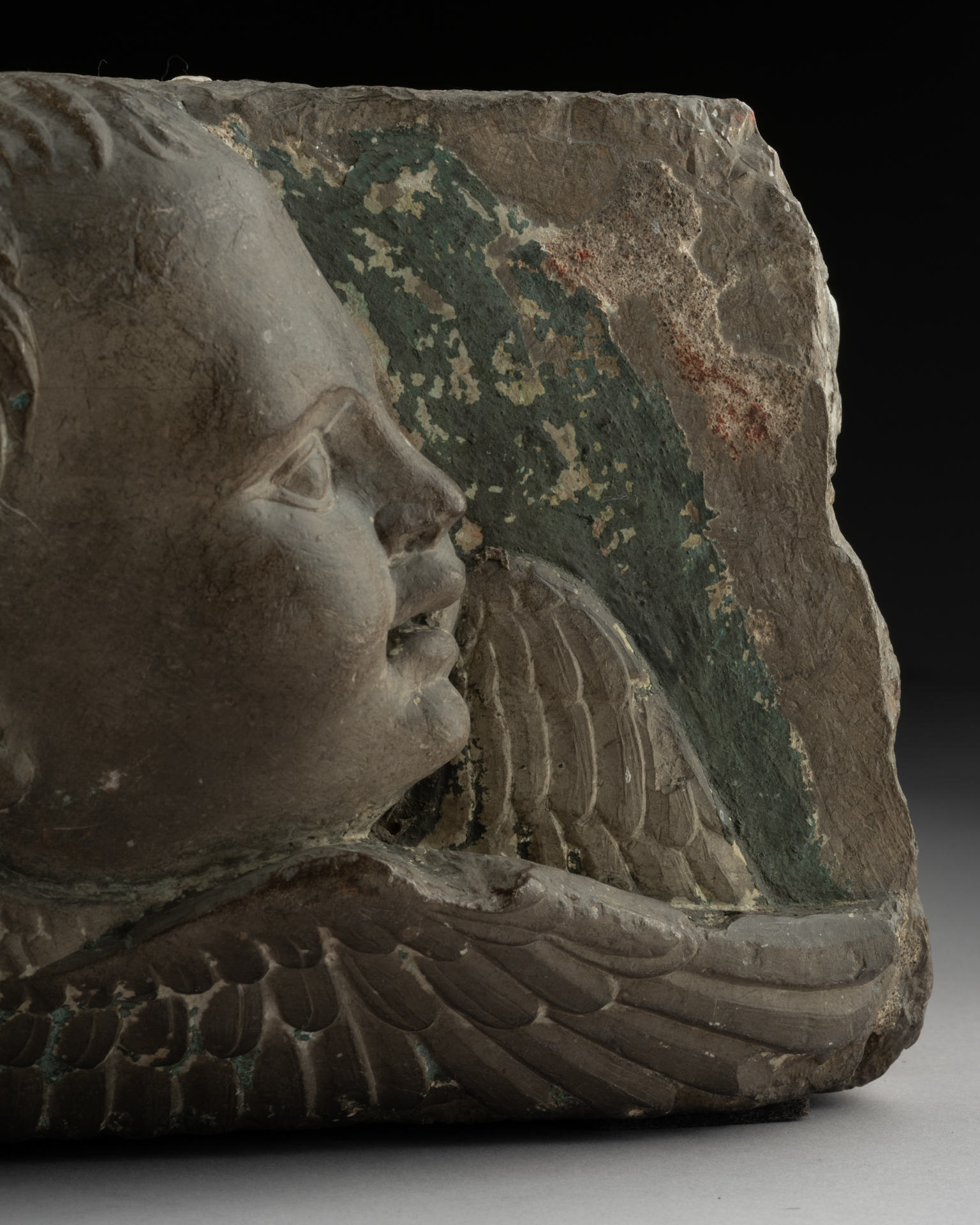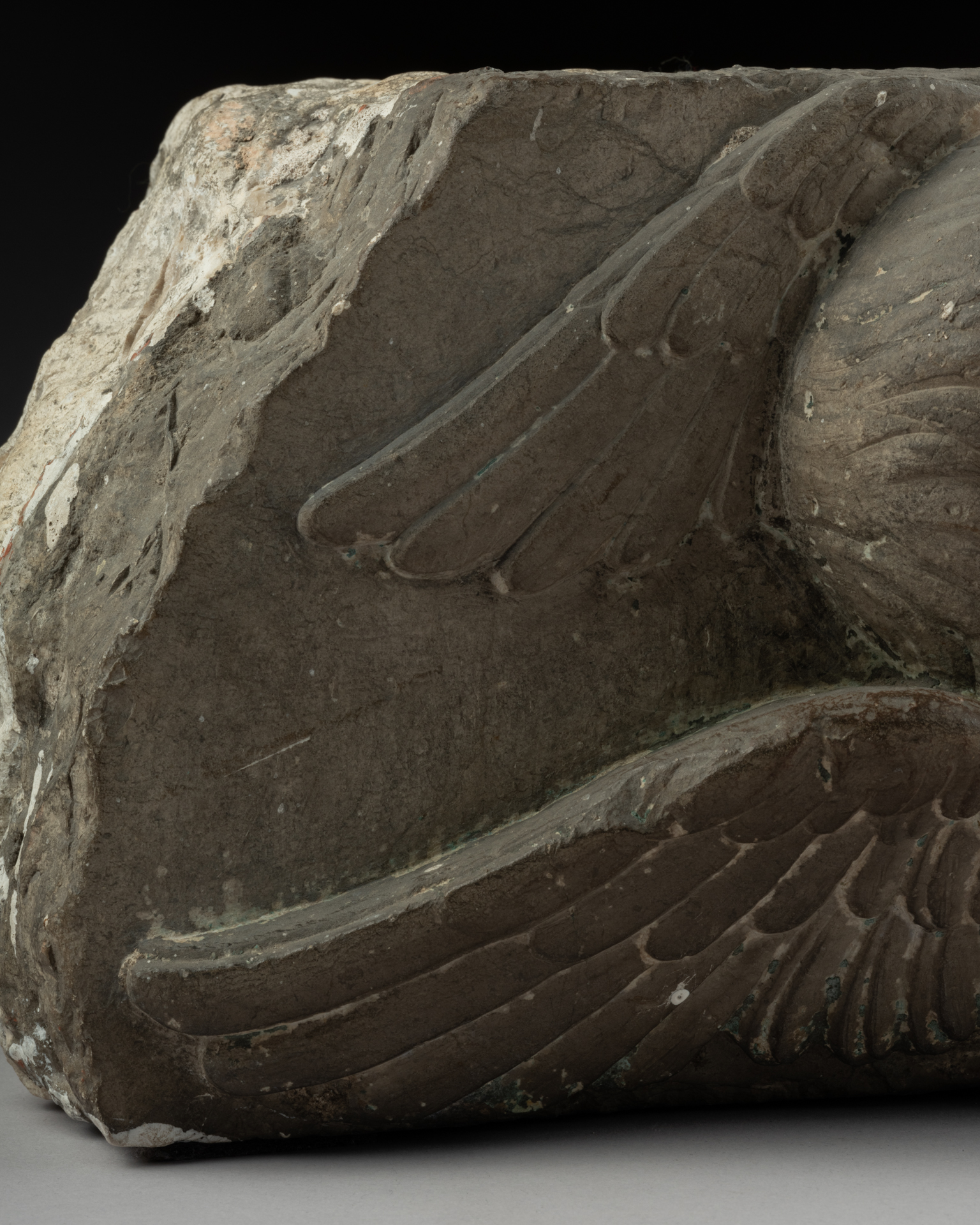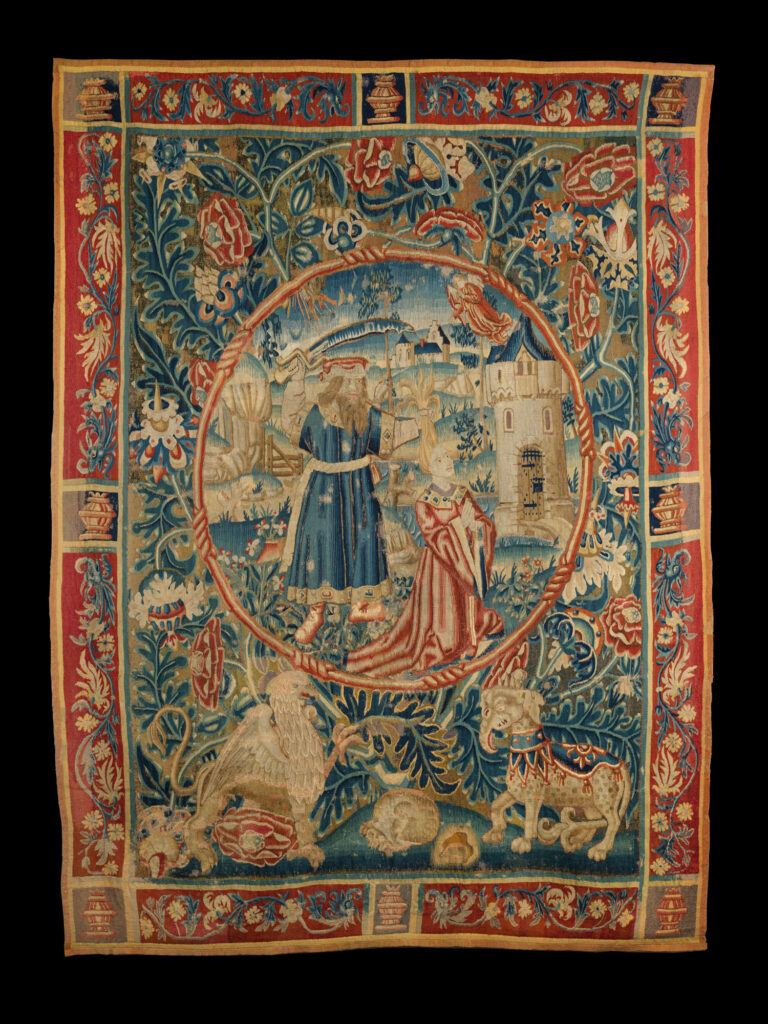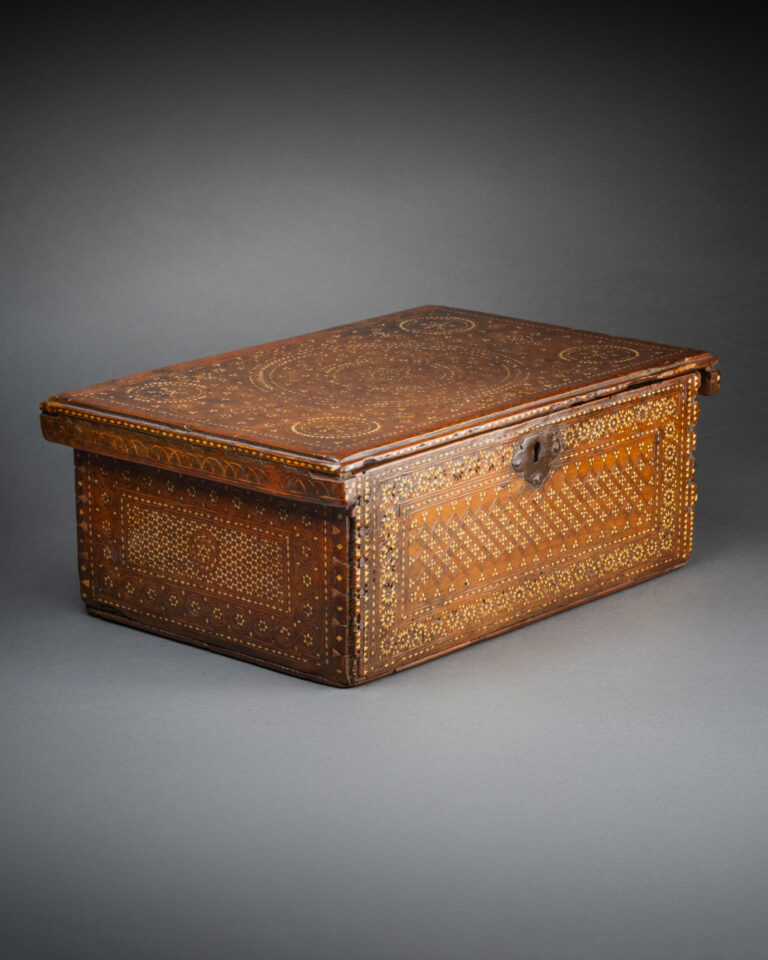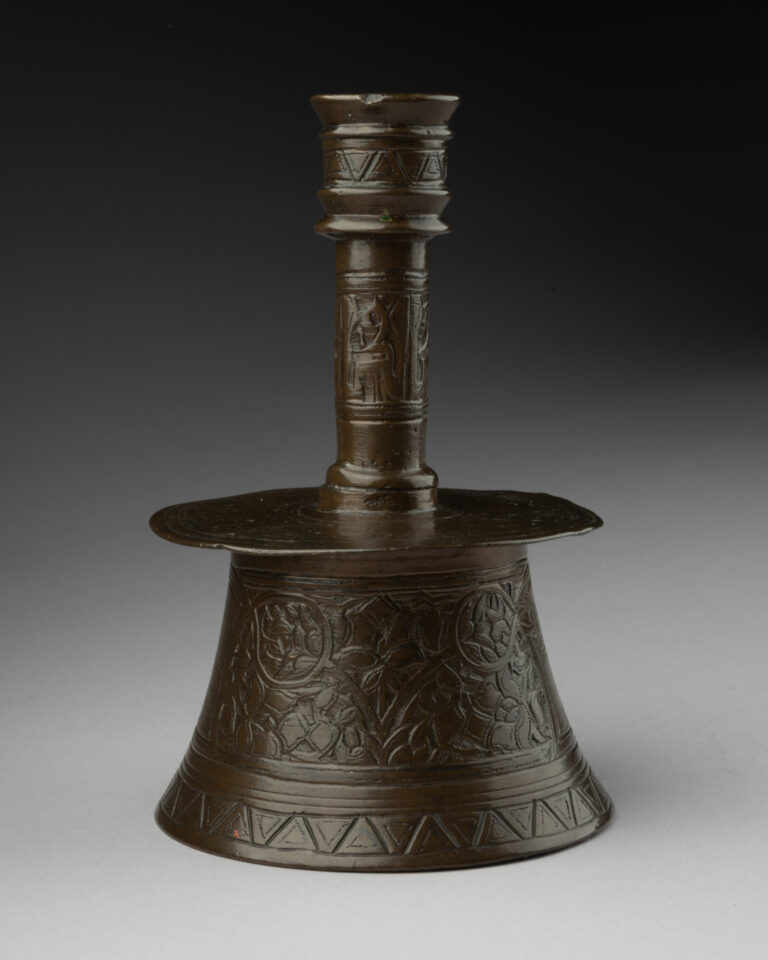This refined Renaissance relief depicts the head of a winged cherub in profile. The wide, expressive eyes and slightly parted lips create an almost ecstatic expression, suggesting the divine joy of a celestial being. Four wings, elegantly carved in perspective, frame the rounded face and emphasize the delicate modeling of the cheeks and hair. The contrast between the boldly carved foreground wings and the softer background relief gives the composition a sense of depth, movement, and ethereal lightness.
Although its original architectural context remains uncertain, the profile view suggests that the sculptural fragment once formed part of a frieze. The mastery of carving—visible in the precisely formed ear, the soft arch of the eyebrows, and the fluid arrangement of the wings—reveals the hand of a highly skilled Florentine sculptor. The refined stylistic vocabulary aligns closely with the work of leading Tuscan artists of the 15th century, including Desiderio da Settignano and Antonio Rossellino. Comparable facial types and expressions are found in Settignano’s later reliefs in the Cappella dei Pazzi, as well as in Rossellino’s Annunciated Angel and Virgin at San Petronio in Bologna and in works associated with the Palazzo Ducale in Urbino.
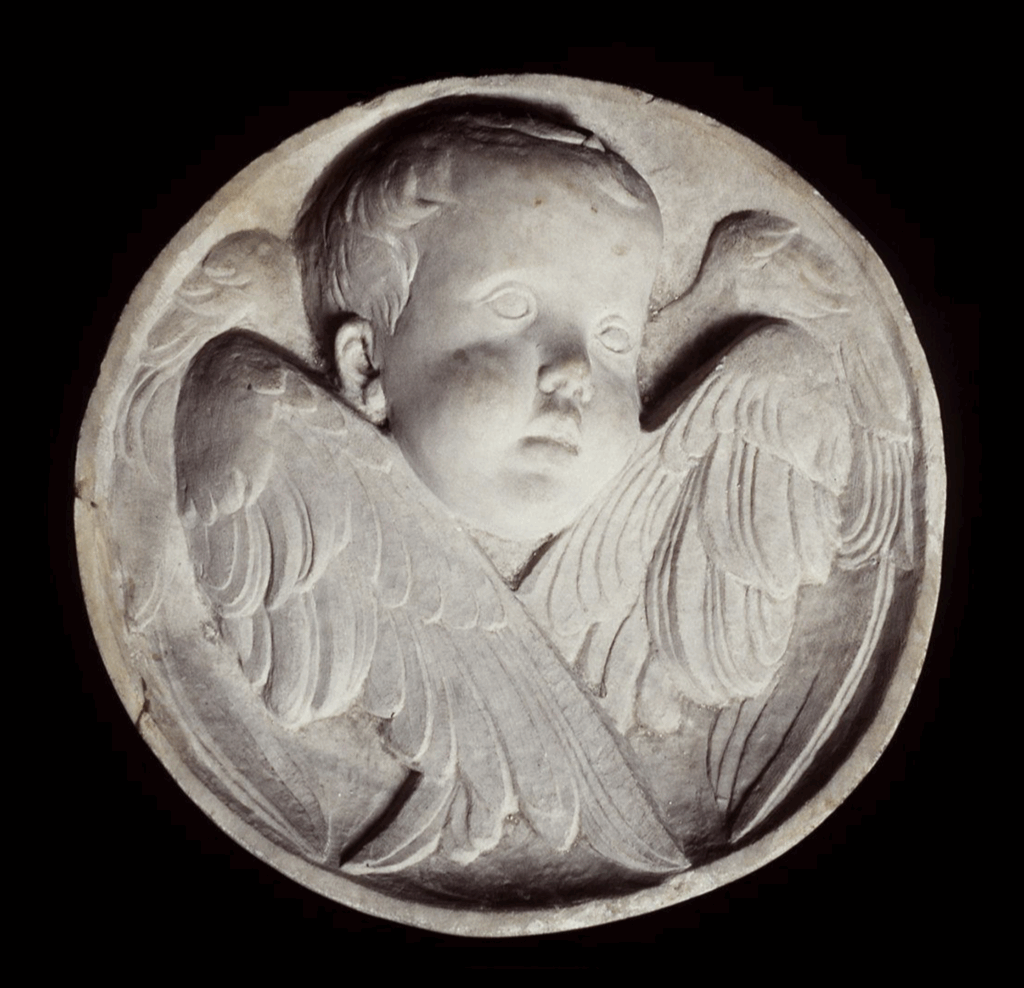
Firmly rooted in the artistic tradition of Renaissance Florence, this finely worked relief exemplifies the elegance, spiritual sensibility, and technical finesse characteristic of the period. It stands as a distinguished example of early Renaissance sculpture and of the Florentine devotion to beauty, expressivity, and divine harmony.

